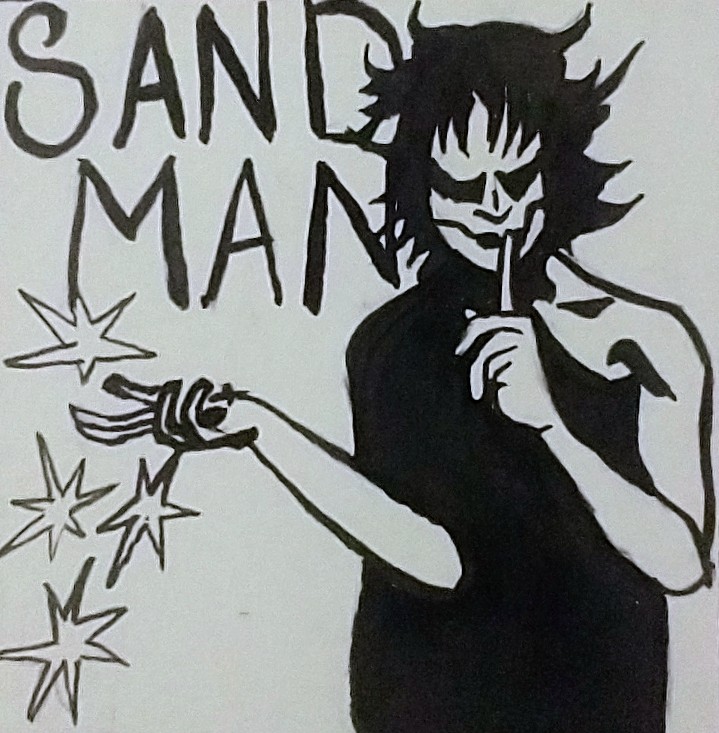The Sandman: Netflix’s Recent-ish Banger
4/5 falcons
November 9, 2022
Netflix recently came out with a new series called The Sandman, which follows Morpheus, the King of Dreams, played by Tom Sturridge. When he finally escapes after being captured and imprisoned by a group of black magic occultists for over a century, Morpheus must regain his power and restore his realm to its former glory.
Many would agree that films and television series are not like they used to be, especially when it comes to caped outings (*cough* Disney), which nowadays look like Saturday Night Live skits. The visual blandness, sameness, and lack of expressiveness actively take the viewer out of the story. That is not the case with The Sandman. It has so much more purpose, craft, and understanding behind the cape, making everything more iconic and grand.
But why? Simple. Sets are not created in computer-generated imaging (CGI) but instead crafted, handmade, conceived, and executed by hundreds of artists, making the environment and story feel more tangible. The Sandman had a budget of about $150 million, which is half—if not one-third—of the budget of the average modern cape flick. Perhaps less studio money allows one to do more.
Neil Gaiman, the writer of the original comic books, had a major involvement in making the show. Gaiman may be a king, or he may have a vision not to be trifled with. He wanted anything that was able to be done practically to be done that way. Writing-wise, he is a legend, never afraid to look into the darkness of a soul or humanity without glamorizing that darkness. Gaiman is always extremely focused on putting the viewers directly into the world and into the mind of his characters. Subjective filmmaking is arguably dead in the superhero genre. Point-of-view-driven narratives are far too rare in this genre when you consider the fact that 90% of comic books put readers directly into the thoughts and feelings of their characters. This added perspective makes The Sandman’s writing brilliant.
Regarding performances, Tom Sturridge is the perfect Morpheus. I genuinely believe this may be one of the best performances in DC’s property. Sturridge can portray multiple complex emotions without the help of dialogue. Always present, he does not have to try to be Morpheus. He never overacts, and each gesture and expression feels natural.
Now for the negatives: the season dragged on, especially near the end, and the continuity is a bit strange as well. There is an episode that includes self-harm and suicide, as well as lots of discomforting thoughts and dialogue. It is genuinely a discomforting episode for anyone. Although the episode is meant to inspire hope and heroism, it would be best for those who struggle with these graphic themes to skip Episode 5.
The Sandman, at its core, was made to turn seemingly never-ending pain into something that can inspire hope. Will Morpheus ever be happy? It’s unlikely. But a series where the audience is able to feel the struggle that the protagonist faces and see him fighting through his pain is important. It inspires others to do the same, because many are fighting that same battle with themselves. While we are not anthropomorphic (one that can manipulate an entire realm with their will), many can relate to working through pain. Feeling like a lone child screaming into the night. Discovering the weight of the often impossible expectation that one will keep on fighting no matter what they suffer. The Sandman teaches us that there is always good—one only has to look.
This piece also appears in our October 2022 print edition.









